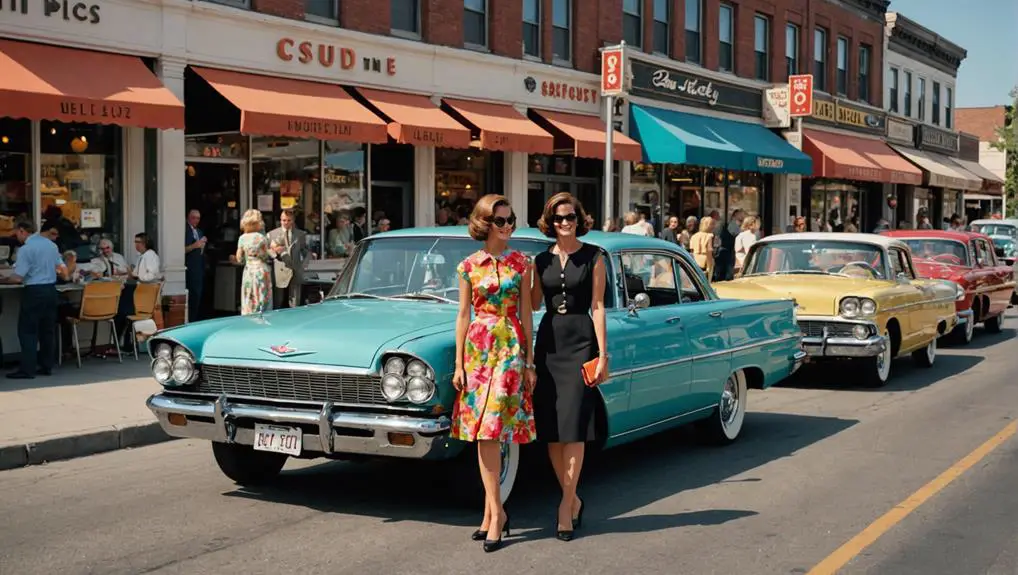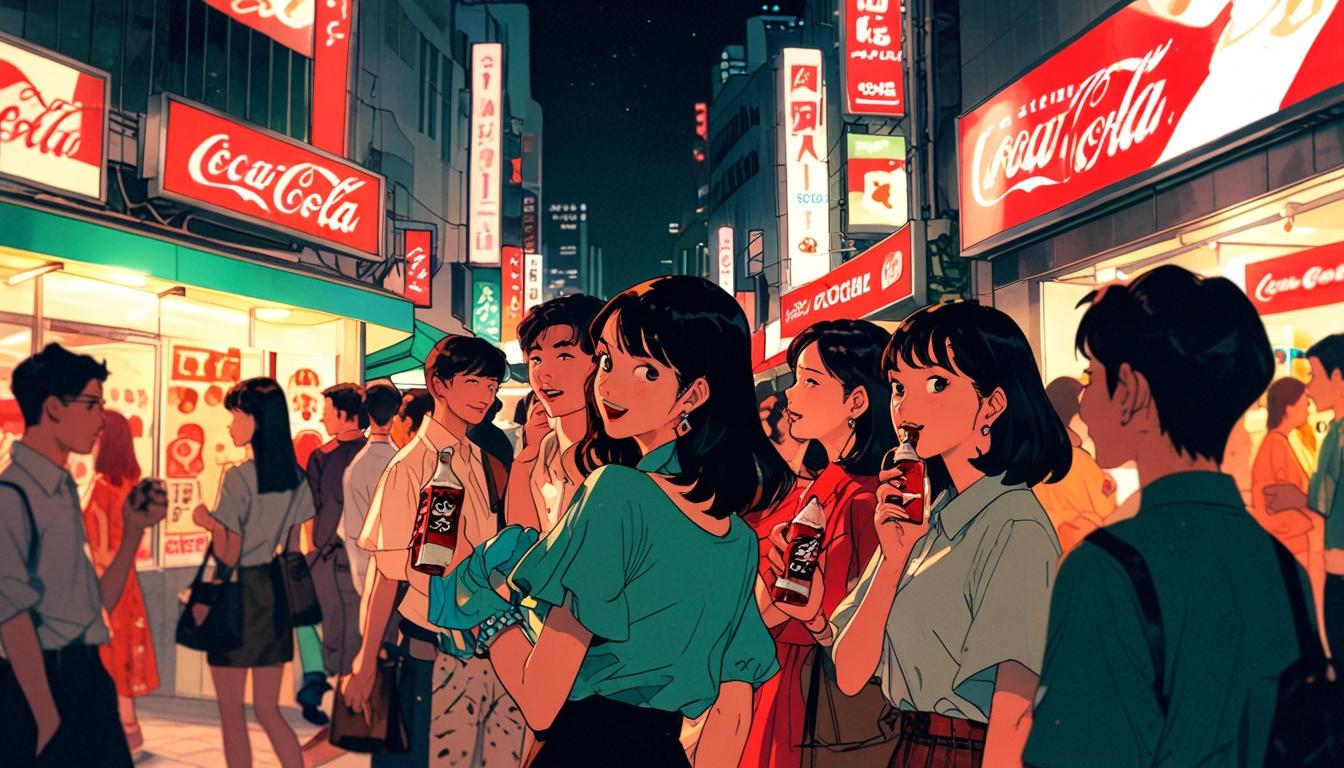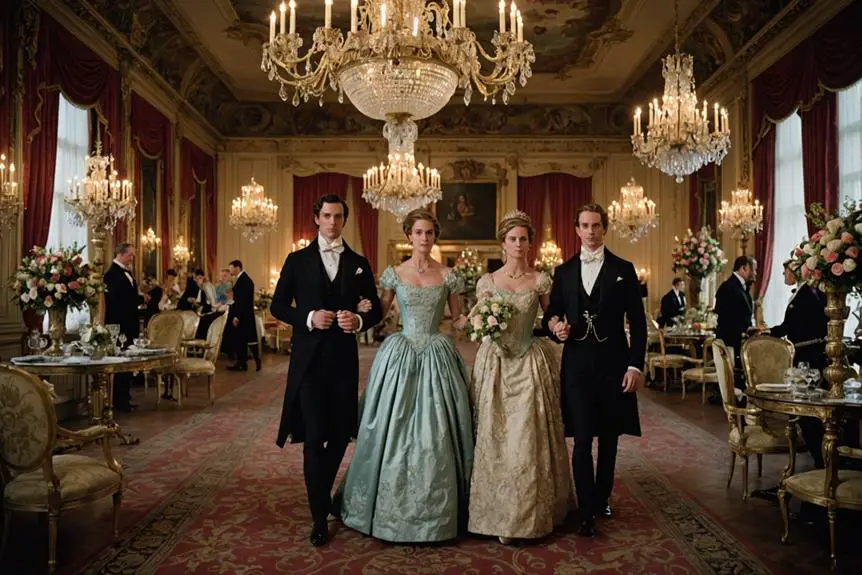In the 1960s, women's Mary Jane shoes became icons of youthful rebellion and independence. You'd see them paired with mod outfits and A-line dresses, capturing the era's spirit. Their rounded toes and single straps were made from innovative materials like patent leather, providing both style and comfort. Fashion figures like Twiggy popularized them, emphasizing versatility in both casual and formal settings. This shift from children's wear to a trendy adult choice marked significant cultural changes. As you explore further, you'll discover how Mary Janes evolved to reflect broader societal shifts and personal expressions through fashion.
Historical Background of Mary Janes
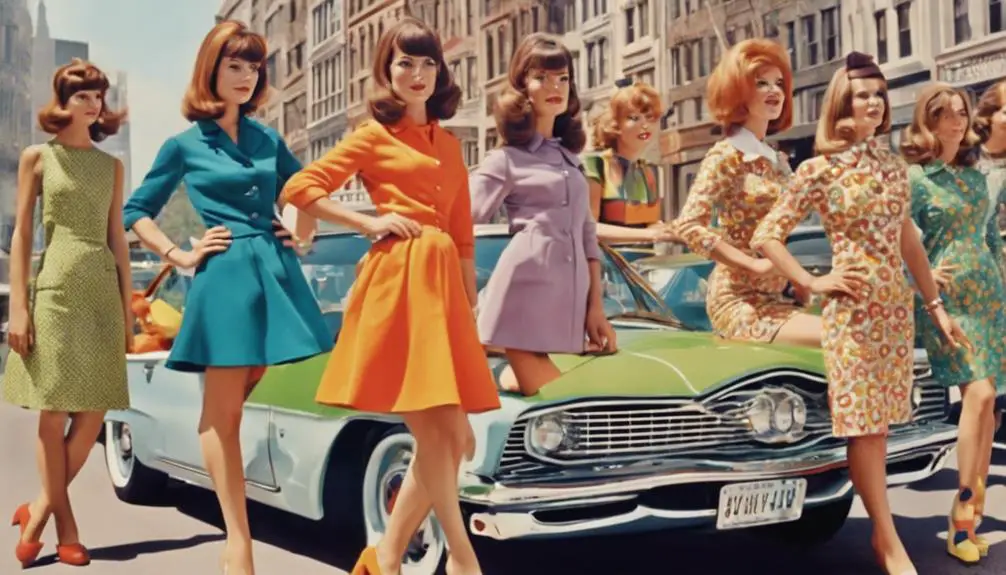
The evolution of Mary Jane shoes paints a vivid picture of changing societal norms and fashion trends. Emerging in the late 1800s, these shoes were initially designed for children, characterized by their closed toe and low-cut design with an instep strap. The popularity of Mary Jane shoes soared, largely due to their association with the character in the Buster Brown comic strip, depicting a sweet, innocent childhood. This connection solidified the shoes as a staple in children's fashion. Over the years, vintage clothing trends by era, particularly in the 1960s, showcased how such footwear adapted to contemporary styles, reflecting the shifts in design and user demographics. As fashion evolved, vintage characteristics began to emerge, enhancing the appeal of Mary Janes for women.
As time went on, particularly by the 1960s, Mary Janes transcended their original purpose. They became a fashionable option for women, reflecting broader cultural shifts. This era saw them evolve into symbols of youth and femininity, aligning perfectly with the spirit of the burgeoning counterculture and liberation movements. The classic design features remained intact, but fashion-forward materials and styles began to emerge. Influential figures like Twiggy played a significant role in popularizing Mary Janes, ensuring their status in women's fashion history. Consequently, what began as a child's shoe transformed into a powerful emblem of changing attitudes towards femininity and self-expression.
Popularity Surge in the 1960s
A vibrant cultural shift in the 1960s sparked a remarkable resurgence in the popularity of Mary Jane shoes, as they evolved from children's footwear to a chic choice for women and girls alike. This alteration was fueled by influential figures like Twiggy and Shirley Temple, who wore Mary Janes, solidifying their status in popular culture. The style aligned seamlessly with the youth culture of the decade, characterized by the mod fashion movement's bold colors and playful designs.
Mary Janes became a symbol of youthful femininity and independence, reflecting the changing societal norms. Their versatility and appeal for various age groups were prominently highlighted in fashion magazines and advertisements. You'd see them worn in an array of contexts, from casual outings to more formal events.
Key factors contributing to their popularity included:
- The endorsement by iconic celebrities, which elevated their status.
- The association with the burgeoning youth culture and mod fashion.
- Their adaptability for different occasions and styles, appealing to a wider audience.
In essence, Mary Jane shoes evolved into a fashionable statement, marking a significant shift in their perception during the 1960s.
Key Design Features
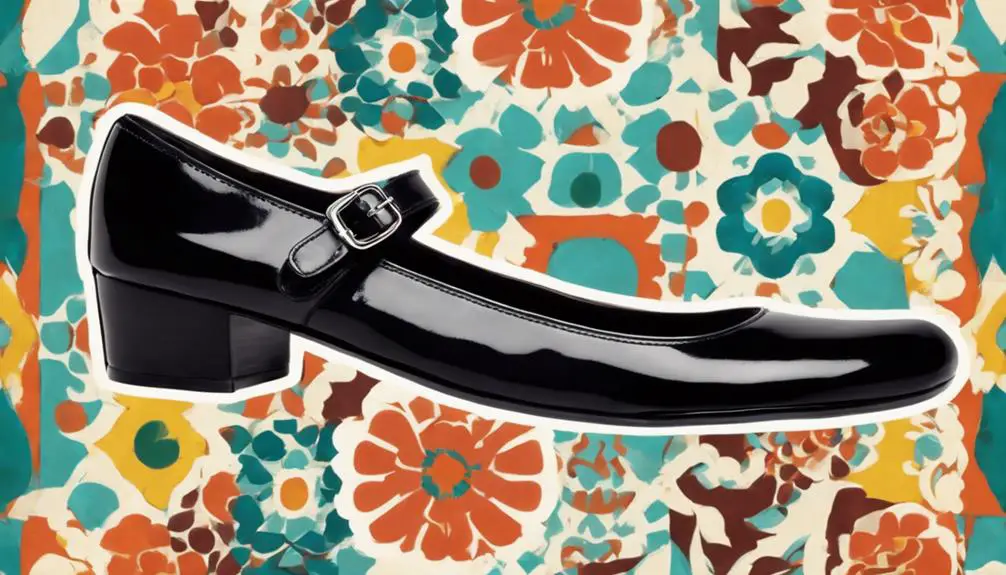
As Mary Janes surged in popularity during the 1960s, their design features became a focal point of fashion discussions. You'll notice that these shoes maintained the classic rounded toe and single strap across the instep, while also adapting to contemporary styles. This era embraced patent leather and shiny materials, often in vibrant colors that echoed the bold fashion trends of the decade.
The heel height varied greatly, with many designs featuring low block heels, making them versatile enough for both casual outings and formal events. This adaptability catered to the needs of women who desired comfort without sacrificing style. Decorative elements, like bows, buckles, and contrasting stitching, were common, adding a touch of femininity and flair to the traditional silhouette.
Moreover, the sizing of 1960s Mary Janes expanded, appealing to a broader audience. You could find options for both children and adults alike, making these shoes a fashionable choice across different age groups. This inclusivity not only highlighted the shoe's charm but also reinforced its status as a beloved staple in women's footwear during the decade.
Cultural Impact and Symbolism
While many associate Mary Jane shoes with childhood innocence, their cultural impact in the 1960s reached far beyond playgrounds. These shoes became a fashion staple, embodying the youthful spirit of the era and reflecting a significant shift in women's fashion. Their simplicity and versatility allowed you to wear them in various settings, from school uniforms to stylish outings, emphasizing their significance in the evolving cultural landscape.
Consider these points that highlight their symbolic significance:
- Youth Culture: Mary Janes mirrored the burgeoning youth movement, promoting a casual, playful aesthetic.
- Fashion Rebellion: Figures like Twiggy linked Mary Janes to the mod fashion movement, portraying a rebellion against traditional femininity.
- Symbol of Independence: As the decade progressed, these shoes evolved into a symbol of sophistication, representing women's growing independence and new roles in society.
The change of Mary Janes from the playground to the fashion forefront illustrates how footwear can encapsulate broader societal changes, making them an essential piece of 1960s culture. Their enduring appeal continues to resonate, reminding us of a transformative time in fashion and femininity.
Notable Fashion Icons
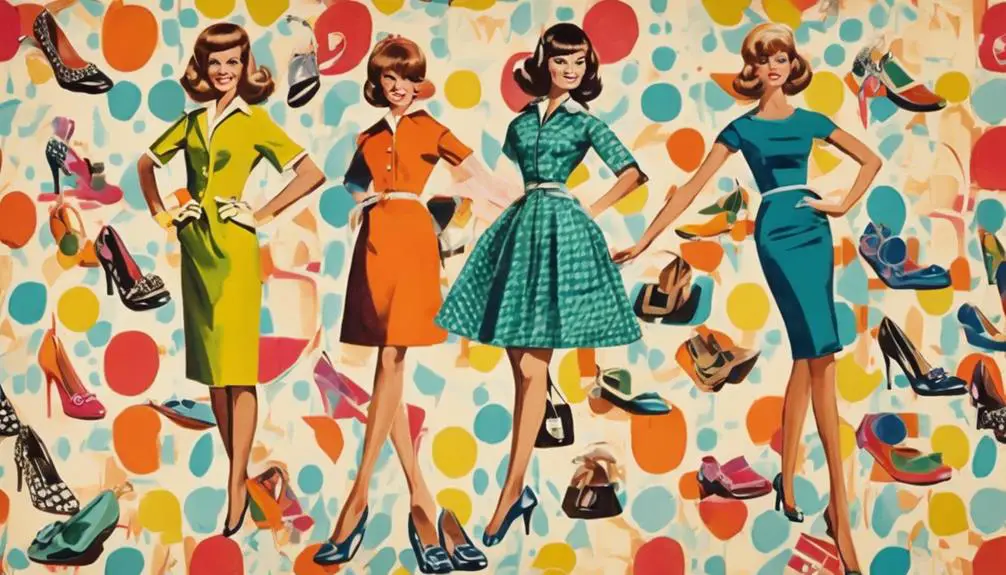
Throughout the 1960s, notable fashion icons played an essential role in popularizing Mary Jane shoes, transforming them from mere children's footwear into symbols of youthful elegance and contemporary style. Twiggy, the epitome of mod fashion, frequently paired her Mary Janes with iconic mini dresses, showcasing their versatility in a decade defined by bold experimentation. Her playful yet sophisticated ensembles captured the spirit of the era, making the shoes a must-have accessory for young women seeking to express their individuality.
Audrey Hepburn, another pivotal figure, solidified the Mary Jane's status as a chic choice through her portrayal in "Breakfast at Tiffany's." The black patent leather pair she donned became synonymous with elegance and grace, appealing to women who aspired to her timeless style. The 1960s marked a cultural shift towards freedom and self-expression, and as Mary Janes evolved into fashionable staples, they reflected this new ethos.
Models and celebrities further integrated Mary Janes into their wardrobes, embedding the shoes within the fabric of 1960s fashion trends. Their influence guaranteed that Mary Janes were not just shoes, but a statement of youthful rebellion and chic sophistication that resonated throughout the decade.
Styling Mary Janes With Outfits
When considering how to style Mary Janes, you'll discover their remarkable versatility in complementing various outfits from the 1960s. The rounded toe and low-cut design of these iconic shoes pair beautifully with a range of ensembles, capturing the playful spirit of the era. For a classic schoolgirl look, combine them with knee-length socks and an A-line dress or skirt. This outfit not only reflects youthful charm but also highlights the shoes' comfort.
Alternatively, you can achieve a more sophisticated vibe by styling Mary Janes with tailored trousers and a mod top. This combination embraces the bold geometric patterns and vibrant colors that defined the decade. Additionally, wearing them with shift dresses enhances the iconic silhouette of the time, merging simplicity and elegance seamlessly.
To elevate your Mary Jane ensemble, consider incorporating these accessories:
- Oversized sunglasses for a chic flair
- Headbands to encapsulate the free-spirited vibe
- Statement earrings to add a touch of glamour
Material Innovations
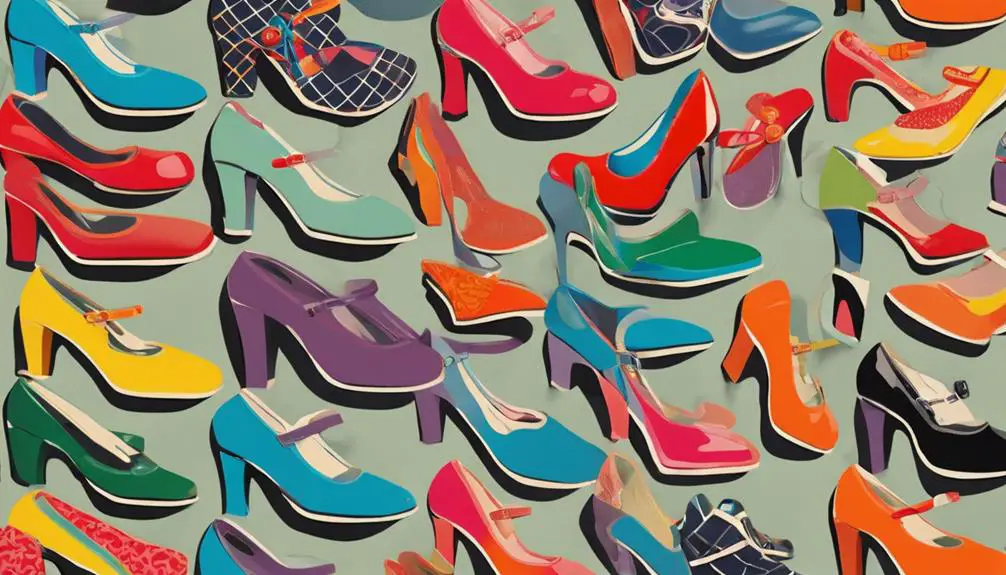
The 1960s marked a transformative period for Mary Jane shoes, as designers embraced innovative materials that revolutionized the footwear landscape. You'd notice that synthetic materials like vinyl and plastic took center stage, providing a more affordable and versatile alternative to traditional leather. This shift not only made Mary Janes accessible but also allowed for experimentation with bold colors and patterns.
Patent leather emerged as a standout choice during this era. Its glossy finish and vibrant hues heightened the visual appeal, aligning perfectly with the decade's fashion sensibilities. Coupled with the introduction of foam padding and cushioned insoles, these innovations enhanced comfort, making Mary Janes ideal for all-day wear, especially for school-aged children.
Moreover, decorative elements like metallic buckles and embellishments showcased advancements in design techniques, reflecting the playful spirit of the time. The combination of new materials and striking designs gave you the freedom to express personal style, embodying the cultural shifts of the 1960s. This period not only redefined Mary Janes but also mirrored the dynamic changes in women's fashion, setting the stage for future innovations in footwear.
Transition From Childhood to Adult Fashion
Mary Jane shoes underwent a significant transformation in the 1960s, becoming emblematic of a shift in societal norms as they moved from children's footwear to a fashionable choice for young women. This change marked a blending of innocence with the emerging independence of young women, reflecting broader cultural changes.
As you explore this evolution, consider these key aspects:
- Design Innovations: The introduction of new materials and embellishments catered to adult tastes, enhancing the shoe's appeal.
- Cultural Icons: Figures like Twiggy embraced Mary Janes, helping to elevate their status in the fashion world and promote them as a stylish option.
- Youth Culture: The rounded toe and low-cut design became symbols of 1960s youth culture, aligning with playful and modern aesthetics.
As Mary Janes gained traction, they became staples across various subcultures, including mod and psychedelic styles. This newfound versatility solidified their place in the 1960s fashion landscape, illustrating how a simple shoe could encapsulate a significant societal change. By wearing Mary Janes, young women not only embraced a new fashion statement but also participated in a cultural shift toward individuality and self-expression.
Enduring Legacy
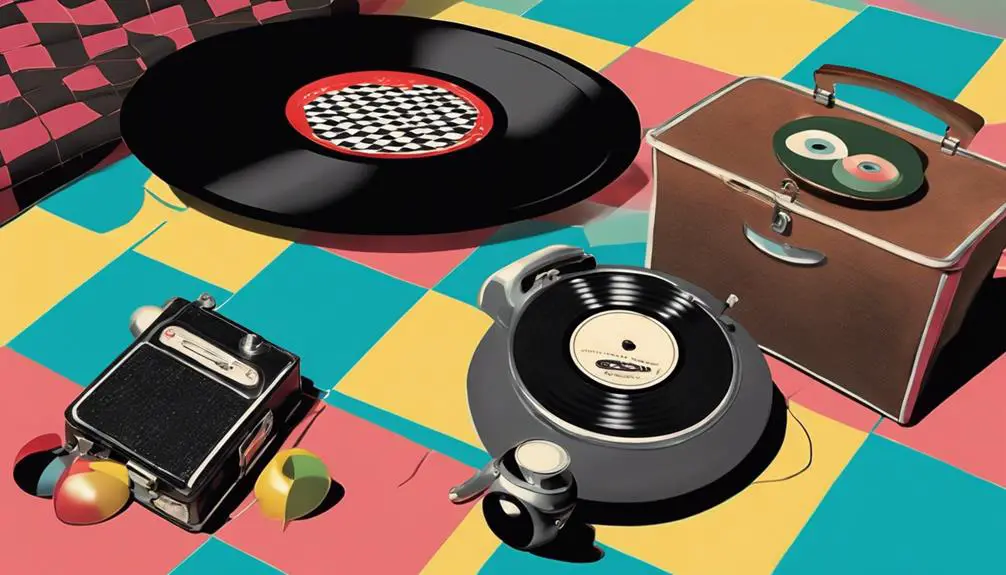
With their enduring charm and versatile design, Mary Jane shoes remain a beloved fashion staple that transcends generations. In the 1960s, these shoes symbolized a unique blend of innocence and youthful rebellion, appealing to young girls and women alike. Their classic rounded toe and strap made them adaptable, easily complementing everything from casual dresses to school uniforms. This versatility allowed Mary Janes to seamlessly fit into various contexts, reflecting the era's cultural shifts.
Fashion icons like Twiggy and the Beatles played pivotal roles in popularizing Mary Janes, associating them with the vibrant mod fashion movement and the burgeoning youth culture. As materials evolved, the introduction of patent leather and vibrant colors kept Mary Janes relevant, enabling them to embrace contemporary trends while preserving their traditional allure.
Today, Mary Janes stand not only as a fashion choice but also as a cultural icon. They evoke nostalgia for many, reminding you of carefree childhood moments. This enduring legacy continues to influence children's footwear choices and solidifies Mary Janes as a timeless emblem of style, adaptability, and youthful spirit across generations.
Modern Interpretations
Numerous modern interpretations of women's Mary Jane shoes showcase how this classic design can adapt to contemporary fashion sensibilities. Today's designers reimagine these timeless shoes, blending traditional elements with innovative materials and styles. The closed toe and strap remain, yet the look has evolved dramatically.
- Bold colors and patterns transform Mary Janes into trend-setting footwear.
- Updated versions feature higher heels and unique embellishments, catering to modern tastes.
- Enhanced comfort through cushioned insoles and flexible materials meets today's demand for practicality.
The resurgence of vintage and retro trends has propelled Mary Janes back into the limelight, appealing to a diverse audience. Celebrities and fashion influencers amplify their status by showcasing these shoes in high-fashion contexts, proving their versatility for both casual and formal occasions.
These contemporary adaptations not only honor the shoe's nostalgic roots but also reflect a broader shift in fashion towards comfort without sacrificing style. As you explore the current landscape of Mary Janes, you'll find a rich tapestry of options that balance tradition with modernity, ensuring that this classic remains relevant in today's wardrobe.
Frequently Asked Questions
Did They Wear Mary Janes in the 60s?
Yes, you'd see Mary Janes worn widely during the 60s. Their rounded toes and stylish straps appealed to many, making them a fashionable choice for both casual outings and more formal occasions throughout the decade.
What Shoes Were Popular in the 60S Women's?
In the 1960s, you'd find a variety of popular women's footwear, like go-go boots, platform shoes, and wedge sandals, each complementing the decade's vibrant, youthful fashion, reflecting boldness and comfort in every step.
What Year Were Mary Jane Shoes Popular?
Mary Jane shoes gained popularity in the mid-1960s, becoming a staple in youth fashion. Their simple design, versatile style, and association with emerging cultural movements captured your attention, making them a must-have accessory during that vibrant decade.
Did People Wear Mary Janes in the 50s?
Yes, people wore Mary Janes in the 50s, often associating them with childhood innocence. Their practicality and comfort made them a popular choice for school uniforms, enhancing their cultural significance during that decade.
